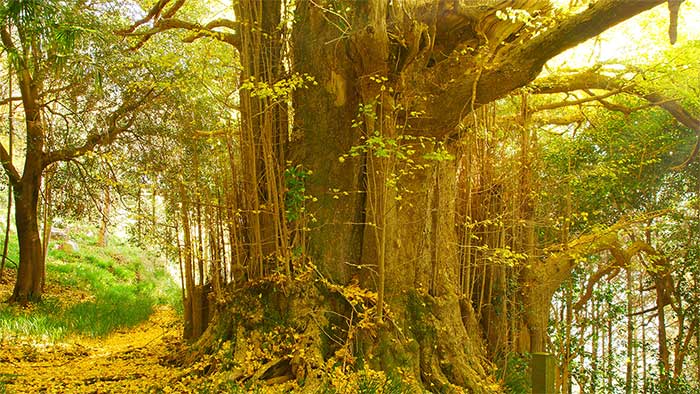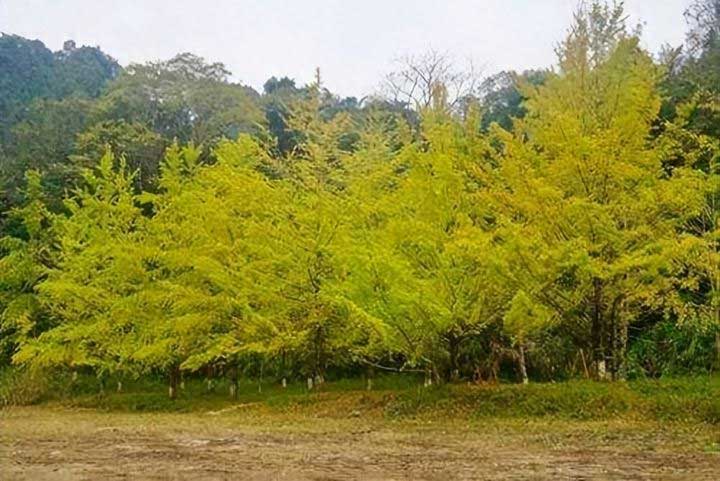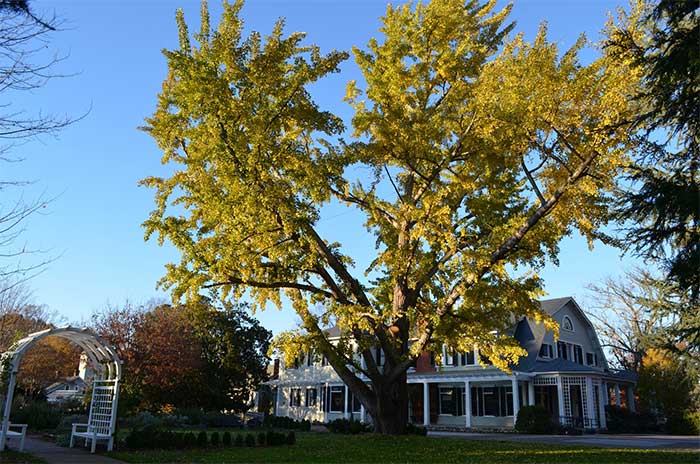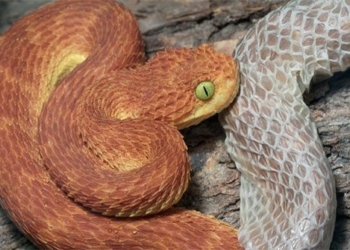In the dense forest, the Ginkgo biloba, once thriving, has now become a species at risk of extinction. But what exactly is causing this tree species to face such a dire situation? The latest gene sequencing research has unveiled the mystery behind it. According to scientists, a rare genetic mutation in the Ginkgo biloba genome has weakened its ability to adapt to dry and cold environments.
Over the past few decades, global warming and human overexploitation have led to frequent droughts and extreme cold. This has been a critical blow to the Ginkgo biloba. In addition to affecting the survival of the Ginkgo biloba, the genetic variant in the tree also significantly impacts humans, as this species is widely used for medicinal and food purposes.

Gene sequencing can also help us screen for Ginkgo biloba individuals that are better adapted to environmental changes to improve the species’ survival rate. (Photo: Science)
Significance and Purpose of Gene Sequencing
The Ginkgo biloba, often referred to as Ginkgo biloba, is an ancient tree species known as a “living fossil” that has existed on Earth for over 200 million years. However, it is now gradually becoming an endangered species that the public is concerned about and aims to protect.
The genetic sequence of the Ginkgo biloba can reveal changes in its habitat. With climate change and the impacts of human activity, the habitat of the Ginkgo biloba has undergone significant changes.
Through gene sequencing, we can understand the differences in adaptability of the Ginkgo biloba in various environments, as well as its mechanisms for responding to environmental stress. This data allows us to gain a better understanding of the conservation status of the Ginkgo biloba and to implement targeted protection measures.

Through gene sequencing, we can understand the genetic differences and mutation frequencies among Ginkgo biloba individuals. (Photo: Zhihu).
The genetic sequence of the Ginkgo biloba can reveal its genetic diversity. Genetic diversity is one of the key indicators of species conservation, reflecting the adaptability and survival capability of the species. Through gene sequencing, we can understand the genetic differences and mutation frequencies among Ginkgo biloba individuals. This will help us comprehend the genetic structure and gene flow of the Ginkgo biloba population, laying the foundation for developing effective conservation strategies.
The genetic sequence of the Ginkgo biloba can also help reveal the reasons for its risk of extinction. Factors such as natural disasters, habitat fragmentation, and human activities pose threats to the Ginkgo biloba.
The genetic sequence of the Ginkgo biloba can also facilitate breeding and genetic conservation programs. These breeding and genetic conservation programs aim to increase the survival rate and genetic diversity of endangered species by protecting and propagating superior gene types.

Gene sequencing research has uncovered significant issues and dangers for the Ginkgo biloba. (Photo: Zhihu).
Main Issues and Threats Discovered Through Gene Sequencing
The Ginkgo biloba has low reproductive capacity, which is one of the critical factors leading to its population decline. The seeds of Ginkgo biloba typically develop from the combination of male and female trees (Ginkgo biloba is a dioecious species, with distinct male and female individuals similar to mammals), but most Ginkgo biloba are male, and very few are female, making reproduction very challenging. Furthermore, the fertilization rate of the Ginkgo biloba is also low, making it difficult to ensure that each female can be fertilized and successfully produce seeds.
Habitat degradation is another important reason for the Ginkgo biloba’s risk of extinction. The Ginkgo biloba has specific requirements for its growing environment, such as soil texture, moisture, and light. However, the ongoing process of urbanization and human activities have destroyed or altered the growing environments of many Ginkgo biloba trees, leading to root disruption, air pollution, and reduced water supply. These adverse environmental factors have limited the growth of the Ginkgo biloba and disrupted the integrity of the ecosystem.

The Ginkgo biloba is a dioecious species, with distinct male and female individuals similar to mammals. (Photo: Zhihu).
The invasion of diseases and pests is also a threat to the survival of the Ginkgo biloba. Gene sequencing studies have identified some microbes and insects harmful to the Ginkgo biloba. For example, a fungus found on Ginkgo biloba leaves known as Cylindrocladium parasiticum can cause damage, wilting, and even death of the leaves. Additionally, the Ginkgo leaf miner is a pest that feeds on the leaves of the Ginkgo biloba, severely affecting the plant’s ability to absorb nutrients and undergo photosynthesis.
Illegal harvesting and overexploitation also severely impact the survival of the Ginkgo biloba. Due to the economic and ornamental value of Ginkgo biloba wood, some individuals take advantage of this opportunity to illegally harvest and trade Ginkgo biloba trees. Some poorly managed tourist sites have also led to overexploitation, resulting in habitat destruction and a significant decline in its population.
What New Methods for Conservation and Breeding Does Gene Sequencing Offer?
The Ginkgo biloba has become an endangered species primarily for the following reasons:
- First, the Ginkgo biloba is widely planted in parks, gardens, and streets as an ornamental tree. However, excessive breeding and cultivation have led to a significant decline in genetic diversity, reducing the overall species’ resilience.
- Second, habitat destruction. As urbanization intensifies, the natural habitat of the Ginkgo biloba continues to shrink, threatening their existence.
- Third, the invasion of diseases and harmful insects. The Ginkgo biloba is susceptible to pests such as pine caterpillars and Ginkgo biloba leaf blight, further exacerbating their precarious situation.

Gene sequencing can also help scientists identify genes related to diseases and pest resistance. (Photo: Zhihu)
To tackle the urgent issues facing the Ginkgo biloba, gene sequencing has provided scientists with numerous new research and conservation methods.
Firstly, gene sequencing technology has enabled scientists to gain a better understanding of the genetic material of the Ginkgo biloba. A comprehensive analysis of the Ginkgo biloba genome allows us to identify genes associated with specific traits of the tree. This helps scientists understand their growth needs, stress tolerance, and reproductive capabilities, thereby guiding conservation and breeding strategies.
Gene sequencing can also assist scientists in identifying genes related to diseases and pest resistance. Through in-depth studies of resistance genes in the Ginkgo biloba, we can develop more effective methods for controlling diseases and harmful insects while protecting the Ginkgo biloba from threats.
By identifying individuals with superior traits, scientists can select appropriate Ginkgo biloba strains for breeding. This enhances the tree’s resilience and adaptability while increasing population sizes and genetic diversity.
In addition to gene sequencing, scientists are employing other new technologies to protect and breed Ginkgo biloba. For example, establishing and maintaining seed banks ensures the preservation of their genetic diversity by conserving and breeding Ginkgo biloba seeds from different regions. Additionally, advancements in cultivation and artificial breeding techniques have allowed scientists to breed Ginkgo biloba more effectively and reintroduce them into threatened natural habitats.




















































